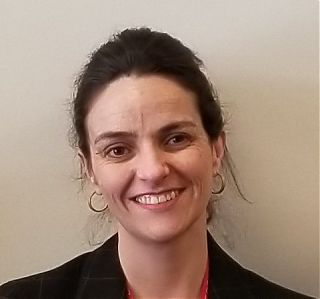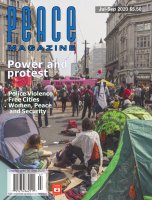Twenty Years of UN Resolution 1325
Assessing Canada’s commitment to women, peace, and security
This year marks the 20th anniversary of the landmark United Nations Security Council Resolution 1325 on Women, Peace and Security (WPS). Canada was a non-permanent member on the Security Council when it voted unanimously for the resolution on October 31, 2000.
Resolution 1325 was a result of an intense campaign after the Fourth World Conference on Women in China in 1995. Women’s civil society organizations, such as the Women’s International League for Peace and Freedom (WILPF) and the Women’s Refugee Commission, lobbied the UN Security Council to hold a formal debate on the impacts armed conflict on women and girls and the underrepresentation of women in peace negotiations.
The text of the resolution derived from the Beijing Declaration and Platform for Action for Equality, Development and Peace that governments agreed upon at the women’s conference. Resolution 1325 calls on UN members to ensure the equitable representation of women in conflict prevention, management and resolution and to end gender-based violence in armed conflict. It also requires member states support women’s peace initiatives and to incorporate a gender perspective in peace operations.
Two years after the resolution’s adoption, women’s organizations pressured the Security Council to urge all UN members to report on how they were fulfilling the resolution’s objectives. The Security Council subsequently called for member states to publish national action plans (NAP). Over time, the Security Council passed 14 additional resolutions to advance the WPS agenda.
Though Canada had been a long-time member of the UN group “Friends of Women, Peace and Security,” which was established to advocate for the full implementation of the Resolution 1325, it took ten years for the Canadian government to publish its first NAP.
In 2009, Senators Nancy Ruth and Mobina Jaffer chaired a study on how Canada could implement Resolution 1325 for the Senate Committee on Human Rights. Their 156-page report, Women, Peace and Security: Canada Moves Forward to Increase Women’s Engagement, made 26 recommendations and called on the federal government to prepare a comprehensive, multi-year national strategy.
Unsurprisingly, the Conservative government led by Prime Minister Stephen Harper released a disappointing 15-page NAP entitled Building Peace and Security for All in October 2010. One of the most glaring omissions in the strategy was its failure to mention Afghan women and address their security needs, though the Canadian Armed Forces were involved in a protracted combat mission in Afghanistan at the time.
Moreover, women questioned the Harper government’s commitment to their security and to gender equality as it had closed 12 of 16 Status of Women offices across the country, cut the funding to over 41 women’s organizations and refused to have an inquiry into the murdered and missing women and girls (MMIWG) in Canada.
With the election of a new majority Liberal government in 2015, Prime Minister Justin Trudeau declared himself a “feminist” and promised to make women’s empowerment a government priority. He created Canada’s first gender-balanced cabinet, launched a national inquiry for MMIWG and appointed Chrystia Freeland as his second Minister of Foreign Affairs.
Inspired by Swedish Foreign Minister Margot Wallström and Sweden’s feminist foreign policy, Freeland announced that feminism was one of the values that would inform Canada’s new foreign policy priorities in a major speech she gave in the House of Commons on June 6, 2017.
Yet in this speech, Freeland also said that “hard power” was critical to Canadian diplomacy and development and that the government must spend more on the military. The next day, the federal government released its new defence policy Strong Secure Engaged (SSE) that included a foreword by Freeland who said the SSE aligned with Canada’s “progressive, feminist foreign policy.”
However, in the defence policy, the Liberal government pledged to spend over $553 billion on the Canadian Armed Forces over the next twenty years and to buy new fighter jets, armed drones and attack helicopters, build more warships and recruit more soldiers to maintain “high-end warfighting.” How was any of this feminist?
At the same time, the Liberal government released a Feminist International Aid Policy promising to allocate more of Canada’s overseas development assistance (ODA) to women’s groups in developing countries. Yet, the federal government refused to meet the target of 0.7% of Gross National Income for ODA, spending just .28%.
Five months later in November 2017, the federal government issued its second NAP on WPS,Gender Equality: A Foundation for Peace. It explained that Canada’s aggressive new defence policy was an expression of the government’s “feminist” international approach. Shamefully, this NAP overlooked Canada’s $15-billion arms deal to Saudi Arabia, a country with one of the worst records of human rights abuses against women.
That year, the federal government also launched the Elsie Initiative to increase women’s participation in peace operations. Yet, Canada’s contribution to UN peacekeeping fell to its lowest level with only 8 women of 35 soldiers wearing blue helmets. According to the UN Peacekeeping Office, Canada is currently ranked 77th for its paltry contributions to UN operations.
In early 2018, Liberal Member of Parliament Borys Wrzesnewskyj introduced a private member’s motion that cited Resolution 1325 to propose an Ambassador for Women, Peace and Security. Later in the year, at a meeting for female foreign affairs ministers in Montreal, Freeland announced that Canada would create the new Ambassadorial position.
 Prime Minister Trudeau appointed Jacqueline O’Neill (photo on left) as Canada’s first Ambassador for WPS in June 2019. She had been the president of the Institute for Inclusive Security and had many years of experience supporting women’s peace leadership in different countries.
Prime Minister Trudeau appointed Jacqueline O’Neill (photo on left) as Canada’s first Ambassador for WPS in June 2019. She had been the president of the Institute for Inclusive Security and had many years of experience supporting women’s peace leadership in different countries.
The ambassador’s three-year mandate includes: advising the federal government on its implementation of the UN Security Council agenda for WPS, consulting with stakeholders, hosting events to encourage women’s participation in peacebuilding, and representing the country internationally. She has begun giving regular briefings to the Canadian Women, Peace and Security Network of which the Canadian Voice of Women for Peace (VOW) is a member.
In February of this year, members of VOW met with Ambassador O’Neill at her office in Ottawa. It was heartening to hear her say that the UN Security Council’s WPS agenda must lead to the reduction of violent conflict and must not “make war safe for women.” The ambassador also expressed her concern that there are no mechanisms to hold UN members accountable for failing to implement the binding resolutions.
Though the recent appointment of an Ambassador for Women, Peace and Security is a positive step, Canada’s commitment to Resolution 1325 on the whole has been craven and inconsistent. Over the past two decades, the federal government has privileged masculinized armed force over women’s peacebuilding, prioritized military spending over development aid, and promoted arms exports that exacerbate insecurity.
It will require a renewed, concerted campaign by Canadian women’s organizations, human rights organizations and peace groups to compel the federal government to adopt a genuine feminist foreign policy and make transformative progress on women, peace and security.
Tamara Lorincz is a PhD Candidate, Balsillie School of International Affairs, Wilfrid Laurier University. She is also a member of the Canadian Voice of Women for Peace and the Women, Peace & Security Network-Canada.
Sources
- Address by Minister Freeland on Canada’s foreign policy priorities (2017). www.canada.ca/en/global-affairs/news/2017/06/address_by_ministerfreelandoncanadasforeignpolicypriorities.html
- Beijing Declaration and Platform for Action%_ (1995).www.un.org/en/events/pastevents/pdfs/Beijing_Declaration_and_Platform_for_Action.pdf
- Department of Foreign Affairs and International Trade (2010) Building Peace and Security for All, Canada’s Action Plan for the Implementation of United Nations Security Council Resolutions on Women, Peace and Security. peacewomen.org/sites/default/files/Canada 2010 (English).pdf
- Global Affairs Canada (2017) Gender Equality: A Foundation for Peace, Canada’s National Action Plan for Women Peace and Security 2017-2022. www.international.gc.ca/world-monde/assets/pdfs/cnap-eng.pdf
- Global Affairs Canada (2019) Canada’s ambassador for Women, Peace and Security: “Strong Secure Engaged, Canada’s Defence Policy.” www.international.gc.ca/world-monde/issues_development-enjeux_developpement/gender_equality-egalite_des_genres/women_peace_security-femmes_paix_securite-rep.aspx?lang=eng
- National Defence (2017). dgpaapp.forces.gc.ca/en/canada-defence-policy/docs/canada-defence-policy-report.pdf
- Senate of Canada (2010) Women, Peace and Security: Canada Moves Forward to Increase Women’s Engagement, Report of the Standing Senate Committee on Human Rights. sencanada.ca/content/sen/committee/403/huma/rep/rep05nov10-e.pdf
- Prime Minister’s Office (2017). The Elsie Initiative for Women in Peace Operations, Backgrounder. pm.gc.ca/en/news/backgrounders/2017/11/15/elsie-initiative-women-peace-operations
- United Nations Security Council (2000), Resolution 1325, S/RES/1325 (2000). documents-dds-ny.un.org/doc/UNDOC/GEN/N00/720/18/PDF/N0072018.pdf?OpenElement
- Women’s International League for Peace and Freedom’s PeaceWomen website. peacewomen.org/member-states
- Women, Peace and Security Network-Canada (WPSN). wpsn-canada.org
